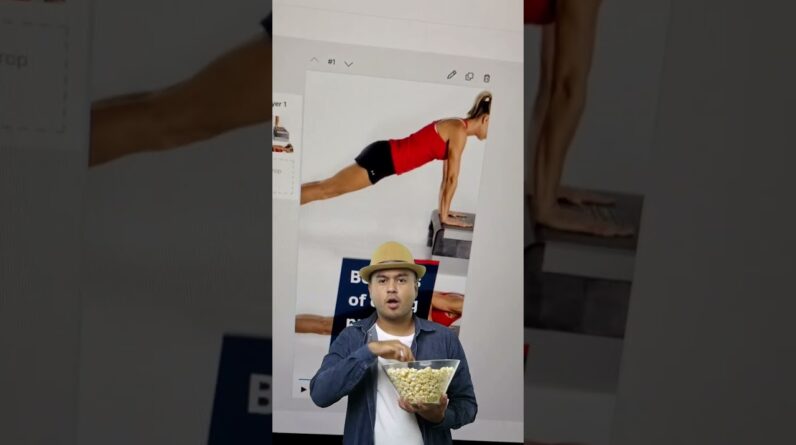[Music] they may seem like great deals but there is a high cost to fast fashion accusative has become a byword for kind of dodgy practices fast fashion is a huge business and one that does not appreciate prying eyes fast fashion has engendered a rise in informality a rise in precarity the turnaround from design to the finished product must be as fast as possible the whole process from order to delivery 12 days [Music] with factories located in the heart of britain i will be paid how much after two weeks three pounds per hour the textile industry has a huge environmental impact actually they are just physically disabled she is only 26 years old the story of this pretty little dress exposes the dark side of cheap fashion [Music] our planet is being swamped in clothes with some 56 million tons sold every year the number sold in europe has doubled since the turn of the millennium [Music] today the textile industry is valued at about three trillion dollars it has grown exponentially there's some numbers that say it's quintuple than volume it's absolutely crazy the figures that i have seen uh estimate that by 2030 the industry will expand by an additional 60 percent with production costs continuing to fall and new collections made at an ever faster rate customers can constantly refresh their wardrobes fast fashion is the commerce of very inexpensive clothing that you are expected or you are ready to replace very rapidly it's very typical for uh the fashion forward buyer to never wear an outfit that they purchased you will wear something once or twice or maybe never [Music] mass-produced cheap clothes are a disaster for the environment how could this be allowed to happen [Music] among the leaders in disposable fashion is a once small spanish brand that's become a global giant of the industry zara now has more than 2 000 stores in almost 100 countries zara launches 65 000 new products every year traditional manufacturers normally have closer to five thousand so that's over ten times the number sixty five thousand new products equals two hundred models per day every month they replace three quarters of their collection competitors do it more like every four to five months zara was founded in la coruna galicia in northwestern spain a world away from the country's fashion capitals madrid and barcelona la corona is the capital of the region and home to zara's parent company inditex the label zara bashka stradivarius and massimo dutti can all be found here under one roof in 2016 it hosted the 80th birthday celebrations for zara's founder amancio ortega heads an empire spanning seven and a half thousand branches with 170 000 employees total annual profits over 3 billion euros ortega is one of the richest people on the planet and one who is famously media shy for this film as well he declined to give an interview in order to outpace the competition zara established a unique system it oversees the entire chain of operations from the textile factories to the retail outlets enabling it to maximize the speed of production zara needs four weeks from the moment they decide on a new model until the day it arrives in stores with rivals it's more a matter of five six or eight months every week there's something new to discover the range of items changes at such a pace that it encourages shoppers to come back the feeling of potentially missing out means that zara customers visit stores 17 times a year whereas with the competition it's only three or four times it's rare for former zara employees to reveal secrets behind the spanish giant's machinations this french designer spent three years working for she designed jeans for bashka a label which targets a younger clientele everything is engineered to minimize timelines it's so obviously a case of copy and paste that's part of the reason why i left eventually it was too much that extreme time pressure makes it impossible to produce truly original items so the designers go on undercover missions to see what the competition has on offer designers all designers travel to get inspiration so for zara we go shopping at high-end boutiques and classic fashion houses so as not to miss out on the latest trends we'd buy items that we thought were crucial and examined them in terms of shapes fabrics and colors and if we had something that met our three criteria you tried to copy it yes [Music] designers buy items of interest and then adapt them into low-cost versions under very precise specifications we had copyright training sessions several times a year to make sure we didn't make one-to-one copies you had to have at least seven points of difference to avoid getting sued you had to create differences exactly it's hard to follow fashion trends and not copy them a real balancing act now and again some of those small fashion labels try to fight back and sue the corporation but they rarely succeed one manufacturer refused to agree to a financial settlement reigns the danish company manufactures raincoats sold in over 20 countries these are yeah these are the evidence here founder daniel bricks designed the brand's biggest success this green raincoat well this was actually one of the pictures we did when we discovered the the cubby in the market so here we have two twins wearing the same jacket fortunately one of the twins bought the sarah jacket and the other train have their original range jack on the right the original on the left the cheaper edition from zara the design has been stolen for sure i don't even kind of understand the motivation of doing something which is so similar since it's so easy to do something which is a bit different like everybody else do but in this case they have made a product which is one-on-one the same a clear example of a copy without the seven stipulated differences an error that should not have happened after all the firm's legal department can reject a garment it deems too risky every time we made a logo or a print we'd show it to the legal people and usually it was approved but sometimes we'd get feedback saying be careful it's too similar and then the garment had to be reworked it drove our graphic design team crazy a legal battle with inditex can be a pricey undertaking but reigns is a successful brand the danish company decided to take the risk and sue for plagiarism [Music] while a case like this cannot be done for less than three hundred thousand euros and even more than that so is is relatively expensive we hired in private detectives in china to find out information about the whole process of applicating our products we have two factories confirming that they were instructed through a production agent that they were to make the same jacket as ours for this customer sara in spain in the spring of 2020 three years after the suit was submitted zara was found guilty by a danish court it had to reimburse commercial damages and agree not to imitate reigns products again clothes make people more the case today than seldom before around half of all instagram posts are connected to fashion and beauty products kamikalon is a social media star who posts new photos and videos daily for her followers under the pseudonym noholita [Music] [Music] here we have asos i've always been a shopping addict and i love to change my outfits around when i see something i order it i have to have it right away and don't want to wait for it this reflexive impulse to buy is no coincidence it is specifically triggered in certain areas of the brain this is the field of research of the american psychologist alexander janewski he's an expert in neuroeconomics [Music] there's an area that is just about here that is called the ventral striatum or the nucleus accumbens and this is a part of the brain that is often associated with reward processing or positive emotions so most of the things that we care about how positively someone is responding to a product or a firm or a brand will be uh represented by activity in this region the more manufacturers know about the way our minds work the more they can influence our purchasing behavior fast fashion triggers our brain's reward circuit with the primary factor being the price here for example you can see something that cost around 15 euros i'm wearing a nasty gal sweater and jeans from balloons i think the sweater costs around 20 euros and the pants 30.
if the price is particularly low specifically if it's low compared to what you're used to seeing or alternatives in the marketplace it can actually be seen as a positive aspect or a part of the appeal of a product you see it less as having to sacrifice that amount of money but more that you are getting something and able to save much more than you would have had to pay otherwise sure the lower the price the more things you put in your basket and you end up with more than you planned that's the trap low prices limited edition collections and no end of stimuli and incentives above all via social media fast fashion is abandoning traditional advertising due to its high cost and limited scope for targeting specific groups instead companies now recruit influencers like noholita now you go from a company telling you why you should be interested in a product to an individual that you aspire to be or you really like it seems like these people are talking directly to you and recommending these products influencers are the stars of this new form of advertising where every fan or follower is a potential customer the higher the profile of an influencer the more money they earn noholita can earn up to 5 000 euros for one video [Music] it's been a alone change for brands because we sell their products so they spend increasingly larger budgets on influencers because we're bound to sell something on instagram we can even post links they'll all add links to a dress or shoes so afterwards people end up on the vendor's website and we get paid according to the sales that were made via these links [Music] we spend an average of two to three hours a day on our smartphones one in two users has a shopping app [Music] the internet is the new mall when you're looking at a young generation where it shops constantly constantly shops you're constantly online and you're constantly clicking and your credit card is memorized by your smart device and you click on something and you click and it comes to your house the traditional leaders in fast fashion have had to re-evaluate their strategy model in response to the success of companies that sell exclusively online they are faster and cheaper and are the inventors of ultra-fast fashion boohoo is one of these new online giants in 2019 the turnover of this british brand approached 1 billion euros it has its own flagship label in addition to others including pretty little thing [Music] [Music] the boohoo website features this dress for nine euros the kind of price where you might assume it was made in an asian factory this garment however was made in europe to be exact in leicester a city with a population of some 300 000 people in the english midlands until the 1970s it was a hub of the british clothing industry exporting its textile products all over the world thousands of workers were employed in large scale factories [Music] the textile sector has returned to leicester albeit with working conditions normally associated with the developing world a clandestine world in which cameras are not welcome foreign once people see with camera there will be 100 phone calls in leicester in within 15 minutes now the man permitting us to film is syed khilji originally from pakistan he's one of the city's most successful entrepreneurs this is effectively where we are making garments how many people are working we have 92 people 92 people working and this is one of the biggest factor in leicester yeah all fast fashion coming from leicester and leicester has given to manufacturing capacity that nobody has in uk not even in uk nobody has in whole europe leicester can deliver any garments within unbelievable delivery time leicester is master of fashion garments manufacturers partly returned to leicester due to its location in central england which on the logistical front means saving time and time is very much a factor for saeed khilji in addition to developing his own label he also supplies british fast fashion brands so the whole process from order to delivery it's uh 12 days this is the unique point of leicester of our industry here that we can do quick fast service quick delivery the fabric is available here all the time so if the customer need the very urgently we can provide them within two weeks times you cannot use one date we cannot lose one hour forget one day the this is our we are calculating hours and minutes here not days clothing designed produced and delivered within two weeks that's twice as fast as zara and at unbeatable prices but that efficiency comes at a high price the factory district with its opaque system of subcontractors has become a lawless zone we have a few number of very powerful brands or retailers buyers at the top that place orders to a very large number of smaller manufacturers that chase small orders every day obviously engenders competition and pushes prices down for manufacturers it's always important to take any order they can get even if they don't have the capacity to fulfill the order and that is part of the problem they have to subcontract it and often they subcontract it to second or third tier factories where working conditions are of a much lower standard than they might be in the first tier manufacturer [Applause] as can be seen all over the city there's no shortage of vacancies for all jobs in the production process tanya is a journalist equipped with a hidden camera she goes undercover for a look inside the clothes factories of leicester [Music] i'm looking for a job do you know if somebody here is looking for somebody i learned very quickly so am i looking for a little job i don't know packaging shooting uh how many are here in great britain yeah only for some weeks so do you know somebody who is looking for some workers you know this time when we're here it's good work no problem okay okay but this anyways is cash no trustworthy [Applause] [Music] the windows are covered up it's the middle of winter and there's no heating the boss insists on a trial period without pay [Music] [Music] [Music] is below the statutory minimum wage in britain in fact less than half of it how much hours should we do like no problem 10 12 or 14 i even 14 at what time should i come here every morning [Applause] okay eight o'clock till six o'clock okay i will try this one it's not even easy tanya's training comprises a brief demonstration on a sewing machine but i have two weeks to learn it [Music] this one is and what is [Music] it's good skirt okay soon novice seamstress tanya is making skirts without pay [Music] the skirts will be sold online by a major fast fashion label pretty little things pretty little things pretty little thing belongs to the boohoo group the skirts sewn by tanya will sell for 15 euros a piece [Music] it's barely 1 p.m when suddenly work stops orders have dried up workers employed on an hourly basis are sent home with no compensation pay fast fashion has engendered a rise in informality a rise in precarity workers essentially work on a system of informal zero hour contracts so they never have a contract so see you tomorrow yes [Music] [Applause] the factories in leicester have a bad reputation prompting many labels to shift production elsewhere but not the boohoo group with pretty little thing a label very much on the rise in 2019 its sales doubled to a total of almost 400 million euros [Music] [Music] oh pretty little thing declined a request for an interview so we headed for the opening of its parisian showroom to speak to its ceo uma the company has made him a billionaire surrounded by his bodyguards kamani jr revels in the pop star like attention [Music] we don't think we want to be more than a fashion website we want to be a lifestyle brand we want to give good um meaning to the customer you know good values if you have a daughter uh we think creator things should inspire girls in the right way i've got a dress here it's a dress it's 15 euros how are you able to do a dress 15 euros it's made in the uk how do you do this yeah we i'm not answering this question what i don't want to what it's your dress yes it's plt yeah how do you do this i don't answer the question why i don't have to answer a question do i no but i'm just asking a simple question how is it you ask somebody else but you're the best no that's somebody else we we know this dress is made by workers that are paid half the minimum we know that never how how do you address this [Music] that's over [Music] uh [Music] after this eventful meeting we received a statement from pretty little thing all textile workers a pretty little thing are treated fairly and receive at least the minimum wage [Music] producing clothes at such a low price comes at a high environmental cost the textile industry is the second biggest polluter in the world after oil for one part one ton of fabric as we call it 200 tons of water polluted so one to two hundred is the ratio the more commerce there is the more pollution there's going to be without efficient filtration and cleanup technology if the fashion industry is going to expand by an additional 60 percent in the next 10 years then we're gonna get sixty percent more pollution [Music] under the pressure of public opinion the textile industry is trying to rebrand trade shows the colour of choice is green organic sustainable recyclable green fashion is in trend and one particular fabric embodies this shift viscose cheap artificial silk popular with fast fashion brands this red dress from asos and the snake print design from boohoo are made of 95 percent viscose so this is the wood from here you make the pulp and from there you make fiber so that's viscose the cellulosic fiber and from here it became yarn from yarn to fabric the process it takes from where you source the wood the kind of certifications you fall into all that put together helps you a nature-based product yeah so this course is more eco-friendly viscose is only manufactured by a handful of companies around the world among them is the aditya bella group a 40 billion dollar indian conglomerate inditex h m asos all the big names by their viscose from birla we believe that the planet comes first our philosophy of forests to fashion ensures that viscose according to baylor is a blessing what's good for the planet is what's good for us but transforming wood into fabric requires a huge amount of chemicals one of the most dangerous is a highly toxic solvent carbon disulfide or cs2 well it's marketed as a green product is it basically a lie yes it's an extremely interesting poison [Music] the danger emanates from the fumes produced to give the viscose its thread-like texture cs2 is added to the wood pulp which is then immersed in a bath of sulfuric acid the minute it hits the sulfuric acid the carbon disulfide leaves the cellulose unfortunately where it leaves the cellulose too is the work room where the workers are working it just goes up into the air nagda in the indian state of madhya pradesh is home to the billa group's first factory built in 1956 it's a city within a city with a workforce of 5 thousand toiling away here day and night journalists are not welcome boy blanc has assimilated the health problems associated with cs2 in a book they include eye disease infertility and vascular problems when i did my work on this book i visited the areas in wales where these large factories had been i started to get emails from people and they would say you know my father died at the age of 42 from a heart attack he worked in the factory room doing that we never got a penny in him ashok porval began working at birla in 1981.

in june 2019 he suffered a heart attack which he says was caused by his job yes yes i consider the company responsible the heart attack i had was because of my work there i filtered the viscose no i was made to work without training they told me to just go ahead we filtered the cs2 by hand with cloth the company never gave me any warning no official ever said anything they told me that doing this job was safe at the age of 58 ashok poval is on indefinite sick leave without pay abhishek razia is one of the few residents of nagda to take action against the pollution linked to the factory a law student he filed a complaint against the company actually they are not allowing the people to come inside the company they are just always hide the all thing in front of the all people nobody can take action against them because they have too much long hand the student's complaint alerted the regional authorities in january 2020 the pollution control agency inspected the baylor factory the factory was ordered to change its practices most importantly officials demanded a study of the effects of pollution on the health of workers looking in particular at carbon disulfide cs2 north of nagda along the chambal river there are 20 000 people living in around 20 villages among them is palma cady located four kilometers from the plant for years the villagers have been reporting health problems [Music] the resident's complaints were finally taken seriously by the authorities today a team of doctors has arrived to examine residents among the patients is this father who came with his two disabled sons [Music] children were born healthy they used to be able to walk and go to school this one walked to school until the sixth grade so his muscles were functioning normally but little by little they degenerated and now he's in a wheelchair [Music] there are no official statistics but many villages show similar symptoms paralysis articulation problems and even loss of speech in this single family there are three people are suffering from physical disability this girl has been 26 year old and they both brothers are 23 or 24 years actually they are just physically disabled and the growth of the body is stopped and you just see the hair of that girl she is only 26 year old [Music] the government doctors counted 209 individuals with health complaints linked to pollution for locals there's one main suspect billa they accuse it of having dumped its waste into the river for decades the village of parmikady has no running water people here drink water from wells fed by the river in 2018 billa began distributing drinking water to villages in the area it finances six daily deliveries providing 90 liters of water for each family the companies are availing the drinking water why would a company give free water to the inhabitants because they know that they are responsible for the pollution otherwise why they are just providing the water to the uh not this village they're providing 22 village and they know that they are responsible for the pollution and they only provide the water for drinking purpose not other uses [Music] to water their fields the farmers in parmikady still use polluted water from the river in january 2020 the authorities ordered biller to improve the water quality downstream from the plants but billa denies all responsibility insisting that any pollution is unrelated to viscose production meanwhile global demand for viscose is soaring the factory in nagda has plans to expand capacity and its facilities [Music] the fashion industry wants us to believe it has increasingly sustainable credentials but in reality the opposite is the case the lifespan of a fast fashion garment is short and not only because in some cases things are only worn once and then discarded jesus this garment has not been worn very often but you can already see signs of pilling around the hips with this dress the fibers have quickly become worn out so no longer looks new in fact when it comes to these fast fashion items you couldn't sell them in a second-hand store either under one percent of our clothing can be recycled every year four million tons of textiles end up in the trash here in europe can we stop this fast fashion craziness there are small brands supporting slow fashion clothes of a higher fairer and more sustainable quality [Music] efforts that soon reach their limits because slow fashion seems to have a limited appeal studies by the french fashion institute revealed that stores with less new items simply see a lower financial turnover [Music] if i had a dollar for every time somebody asked me tell me what i should buy i say nothing nothing you have way too much stuff already but now what do we do what do we say stop spending money this is not a viable economic solution not shopping is not a solution to the industry so fast fashion will continue to be popular and it will continue to show strides towards improving towards circularity so we might see minor improvements in product development but we will not see the end of fast fashion [Music] [Music] [Music] you







